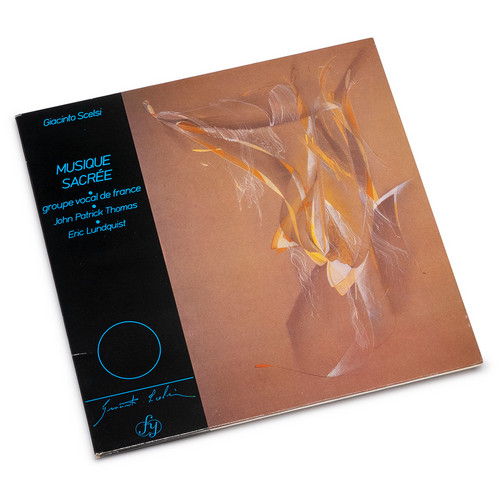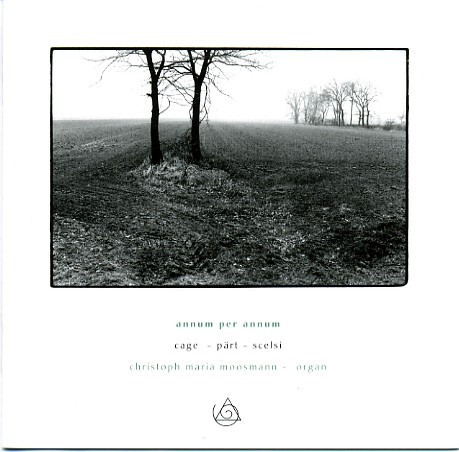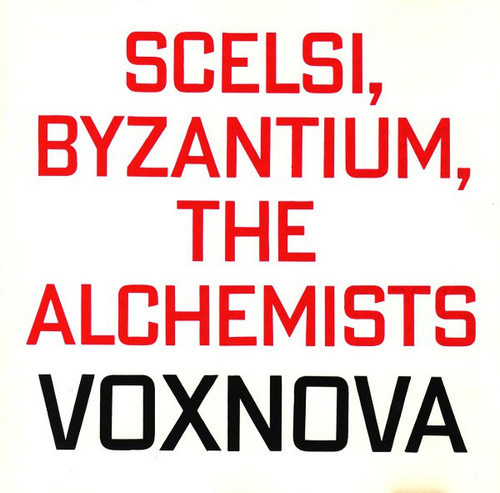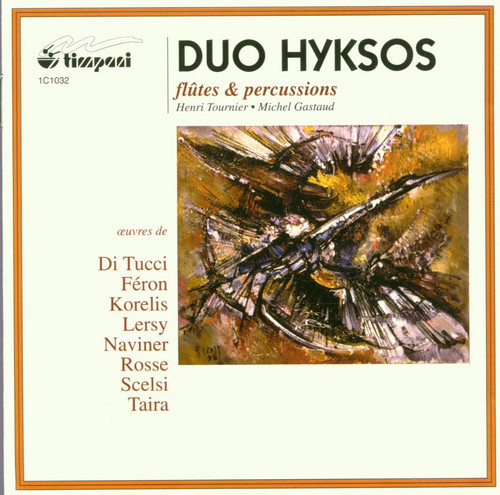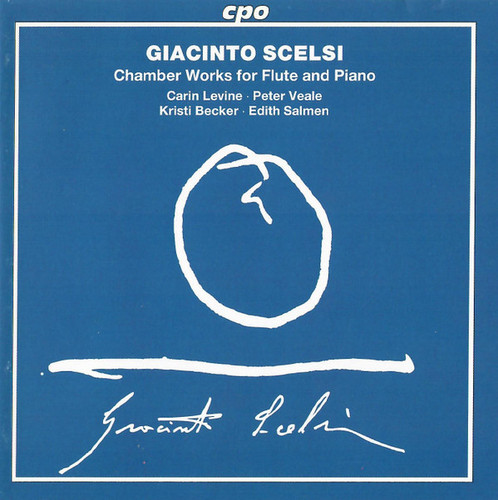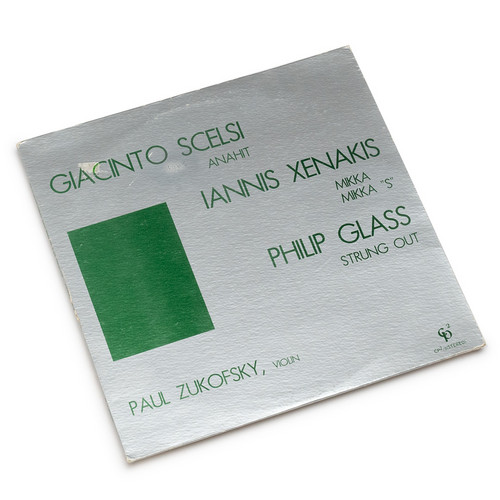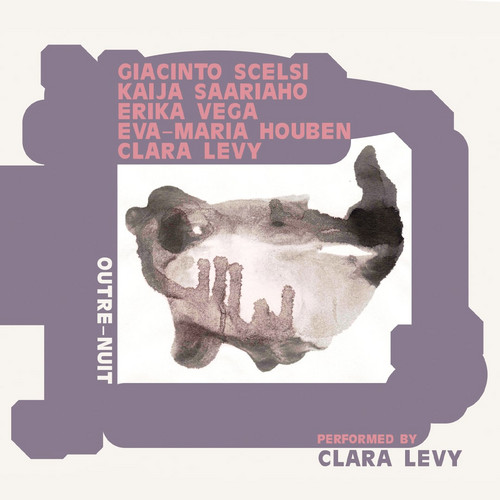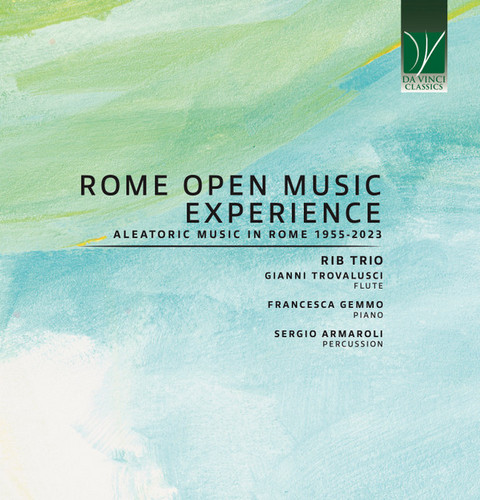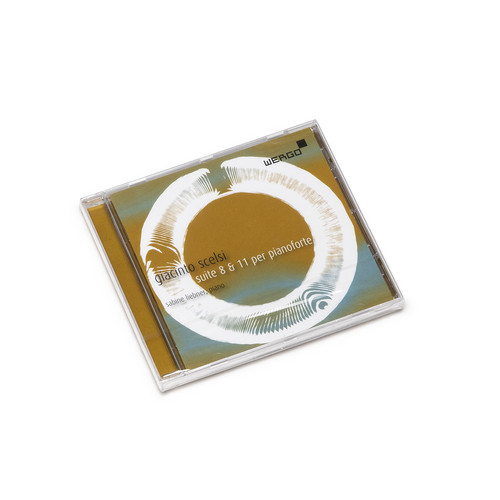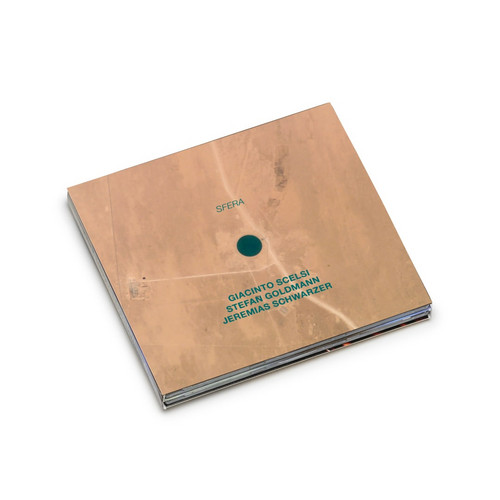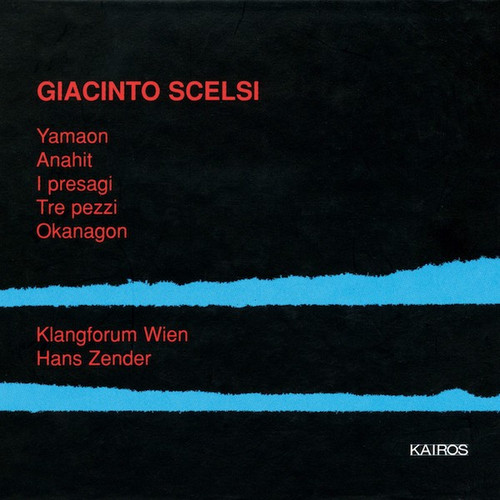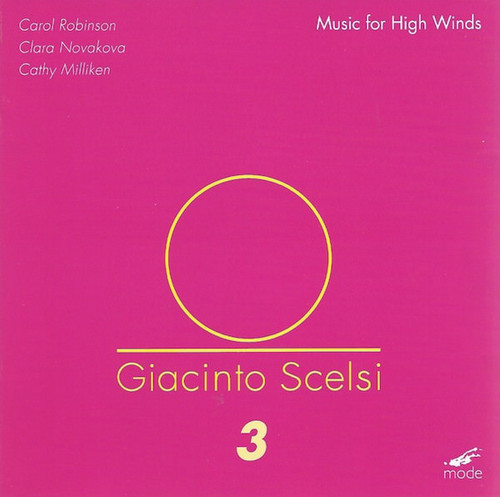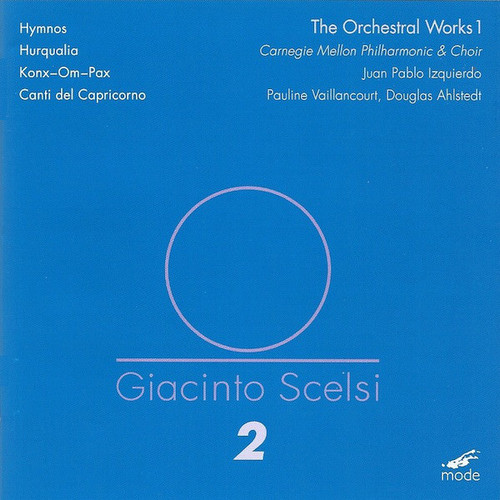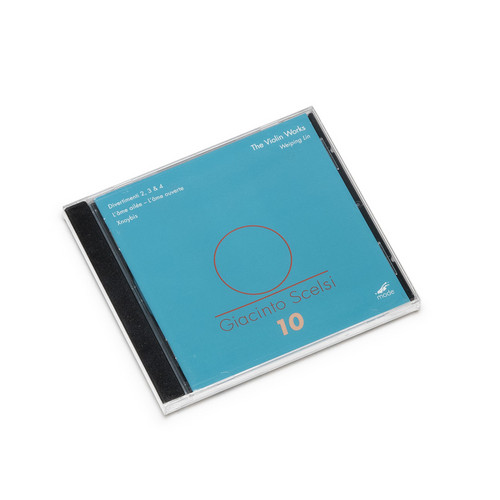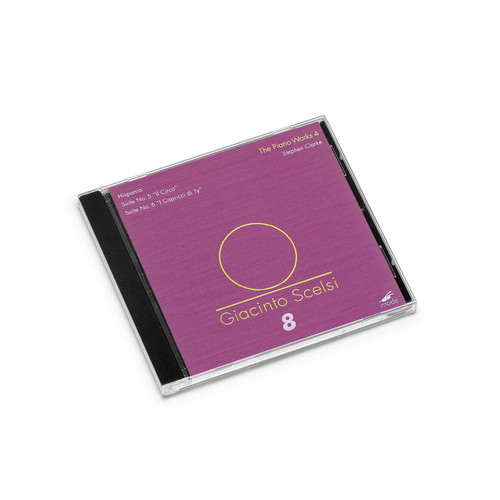Giacinto Scelsi
Giacinto Scelsi was an Italian composer who also wrote surrealist poetry in French. He is best known for writing music based around only one pitch, altered in all manners through microtonal oscillations, harmonic allusions, and changes in timbre and dynamics, as paradigmatically exemplified in his revolutionary Quattro Pezzi su una nota sola ["Four Pieces on a single note"] (1959). His musical output, which encompassed all Western classical genres except scenic music, remained largely undiscovered even within contemporary musical circles during most of his life, until a series of concerts in the mid to late 1980s finally premièred many of his pieces to great acclaim, notably his orchestral masterpieces in October 1987 in Cologne, about a quarter of a century after those works had been composed and less than a year before the composer's death (he was able to attend the premières and personally supervised the rehearsals)
Giacinto Scelsi was an Italian composer who also wrote surrealist poetry in French. He is best known for writing music based around only one pitch, altered in all manners through microtonal oscillations, harmonic allusions, and changes in timbre and dynamics, as paradigmatically exemplified in his revolutionary Quattro Pezzi su una nota sola ["Four Pieces on a single note"] (1959). His musical output, which encompassed all Western classical genres except scenic music, remained largely undiscovered even within contemporary musical circles during most of his life, until a series of concerts in the mid to late 1980s finally premièred many of his pieces to great acclaim, notably his orchestral masterpieces in October 1987 in Cologne, about a quarter of a century after those works had been composed and less than a year before the composer's death (he was able to attend the premières and personally supervised the rehearsals)
Quattro Pezzi / Pranam II / Okanagon / Kya (LP)
condition (record/cover): NM/EX Gatefold sleeve. Giacinto Scelsi (1905-1988), one of the most enigmatic figures of 20th-century music, presents four essential works exploring his revolutionary approach to sound. Scelsi's radical music focuses on the microtonal universe within single pitches – sound as living, breathing matter rather than melodic material.
Quattro Pezzi (su una nota sola) showcases his groundbreaking chamber orchestra aesthetic built on single notes. Pranam II creates ritual int…
Musique Sacrée (LP)
condition (record/cover): NM/NM Gatefold sleeve. A profound exploration of sacred music by one of Italy's most enigmatic composers! Giacinto Scelsi (1905-1988), whose work remained largely unknown until late in his career, created a unique compositional language centered on microtonal explorations and the inner life of single sounds. This rare Fy release presents his sacred works, revealing Scelsi's deeply spiritual approach to composition. Moving beyond traditional harmonic structures, these pi…
Annum Per Annum
1995 release ** Contemporary music for organ by Arvo Pärt, John Cage and Giacinto Scelsi.
Scelsi, Byzantium, The Alchemists
1994 release ** "From the Byzantine Alleluia that begins this ritual to the Scelsi Alleluia that brings it to a close, a circular program weaves a path through the world of Christian theology, Jewish tradition and alchemy, brought together by the universalist music of Giacinto Scelsi. Michael Maier was an alchemist composer whose three voice fugues speak of bizarre cures and spiritual unions. Veronika Krausas set a text by Quintan Ana Wikswo evoking the first female alchemist, Maria the Jewess. …
Flutes & Percussions
2011 release ** Works for flute and percussion by Petros Korelis, Jacques Di Tucci, Roger Lersy, François Rosse, Alain Féron, Giacinto Scelsi, Yoshihisa Taira, Jean-Yves Naviner.
Chamber Works For Flute And Piano
1998 release ** "For the first time, we can hear Giacinto Scelsi playing piano! It's short (3:51) and the recording quality substandard, but Scelsi's improvisation with Carin Levine, Krishna e Radha, gives a window into the mind of one of the greats--that until now we could only hear through the veils of transcription and composition. The other premiere is Quays, for alto flute (1954). Levine has made her mark in the avant of avant-garde flute. The remaining pieces here have all been recorded a…
Anahit / Mikka / Mikka “S”/ Strung Out
Absolutely essential 1976 ambient/modern classical compilation of solo violin music by three legendary composers.
Outre-Nuit
Outre-nuit as Outre-noir by Pierre Soulages, the greatest nuances on subtle variations. The programme can be listened to in one go between Clara's two compositions, it's Xnoybis, an extraordinary performance by the great Giacinto Scelsi - a piece that makes you feel like you're listening for the first time - Giacinto Scelsi's Xnoybis (1964) is a journey amongst the reliefs contained within one single pitch. Written in three parts, the piece is an instinctive approach to the sound spectrum (the t…
Rome Open Music Experience
*2024 stock* "Rome: not only the capital city of Italy, but also an acronym standing for Roman Aleatoric Music Experience. The three musicians of the Rib Trio, featured in this Da Vinci Classics album are all among the leading experts in the field, and they decided to explore a quintessentially Roman phenomenon, i.e. the fertile ground found by aleatoric music in the Roman area, from the post-World-War II years until present-day. Aleatoric music is music whose notational parameters (such as pitc…
Suite 8 & 11 per pianoforte
Giacinto Scelsi (1905–1988) is one of the most unusual composers of the twentieth century, a unique figure whose importance was only fully recognized and celebrated after his death. During his lifetime, he was often dismissed, especially in Italy, as a pretentious dilettante because he did not notate his music himself. Beginning in the mid-1950s, he recorded his improvisations at the piano and had them transcribed by others. In this way, in the course of only a few years hundreds of piano pieces…
Canti Del Capricorno
*2022 stock* Michiko Hirayama inspired Giacinto Scelsi to write his twenty-part cycle "Canti del Capricorno" between 1962 and 1972. To this day the Japanese singer (b. 1923) is a unique performer of this spiritual yet energy-filled work for solo voice, with instrumental accompaniment for certain songs: Scelsi’s notes in his own hand in the score; that is her treasure, when she comes to Ulm in May 2006 to give a concert in the series neue musik im stadthaus. Michiko Hirayama is a vocal power stat…
Sfera
Giacinto Scelsi (1905-1988) was an Italian composer and rather unusual pioneer of electronic music. His works are neither based on traditional techniques nor do they resemble concepts of the 'new music' avant-garde. Since the 1950s he recorded improvisations on the ondiola (an early electronic instrument) to magnetic tape, often in multiple layers. These recordings were then transcribed into scores by his assistants – probably constituting the first attempt at making electronic music heard throu…
Works for Violin and for Viola
** In process of stocking ** Giacinto Scelsi (La Spezia, 1905 – Rome, 1988) is one of the most original Italian composers of the twentieth century. Musician and poet of aristocratic descent, Scelsi spent his childhood in his family’s castle, in Valva, where he received “un’educazione medievale” in which he recalls “scherma, scacchi, latino”, 1 and developed an early attraction towards improvisation on the piano. “De l’age de trois ans et demi, j’ai commencé à improvisers au piano. [...] je ne s…
Suite No.9 / Quattro Illustrazioni / Un Adieu
Shira Legmann is an Israeli concert pianist, with a wide repertoire from Baroque to contemporary and experimental music. This album contains three piano works by Italian composer Giacinto Scelsi: Suite No.9 "Ttai" (1953), Quattro Illustrazioni (1953), and Un Adieu (1978/1988). This is Legmann's second CD on Elsewhere Music, following the 2019 album "Barricades" in which she was the pianist for Michael Pisaro's composition for piano/electronics.Legmann's clean, supple yet solid piano sounds, whic…
Yamaon
Yamaon (1954-1958) for bass, alto saxophone, tenor saxophone, contra bassoon, percussion and doublebass is one of the wildest and most direct works of Scelsis. Just as the composition I presagi completed in the same year, the title warns of the destruction of a Mayan city. As Varèse in Ecuatorial and Nocturnal, Scelsi in Yamaon works with a differentiated repertoire of vowels, consonants, and syllables. These have no linguistic semantic meaning, but convey heterogeneous values of expression. “Wh…
The Orchestral Works 2
"The first recording of his 32-minute grand cantata 'La Nascita del Verb.' Steeped in chromaticism, with hints of Scriabin and a sea of percussion, 'Nascita' boasts a vast double fugue (one of the most imposing in the history of music) and a forty-seven voice canon in twelve keys. This work, 'truly written in blood,' left Scelsi 'in a deplorable state, afterwards he stopped composing for several years. One of Giacinto Scelsi's infamous pieces are the 'Quattro Pezzi (su una nota sola).' Ear piece…
Music For High Winds
Clarinetist Carol Robinson had the unique opportunity to work directly with Giacinto Scelsi on his music: "I discovered this music in 1981. Captivated, I began including pieces in concerts the following year. A friend of the composer who attended a concert gave him a recording of my performance. As a result, Scelsi invited me to Rome. In his apartment overlooking the Roman forum... On numerous occasions we worked in detail on all his music for clarinet, an instrument particularly important…
The Orchestral Works 1: Hymnos, Hurqualia, Konx-Om-Pax
Volume 2 in Mode's Scelsi Edition presents three of his rarely heard and recorded orchestral works, vividly captured in outstanding sound. Hymnos' large orchestra is divided antiphonally into two almost identical groups, symmetrically placed on each side of a central axis made up of the organ, timpani, and percussion. About halfway through the piece, as a result of accumulated pedal tones and their harmonics, the aura of a phantom choir miraculously appears-or so it seems-in a spine-tingli…
The Works for Violin
This is the first complete recording of Giacinto Scelsi's works for solo violin. They span from the earlier 'Divertimenti' in his more traditional virtuoso style, to the two later works which find Scelsi exploring the sound 'inside of the note'. 'Divertimento No. 2' receives its first recording here ('Divertimento No. 1' has never been found).
Taiwanese born violinst Weiping Lin is Assistant Concertmaster of the Austrian Broadcasting Corporation Radio Symphony Orchestra Vienna (RSO-Wien) …
The Piano Works 4
“Hispania “Triptyque pour piano” (1939). Suite No. 5 “Il Circo” (1935). Suite No. 6 “I Capricci di Ty” (1939). Stephen Clarke, piano. Mode’s Scelsi Edition continues with the fourth volume devoted to his piano works — three first recordings of major, large scale works from his early period of the 1930s. The piano plays a role of undeniable importance in Scelsi’s life and work. From 1930 to 1941, and again from 1952 to 1956, the composer produced an enormous repertoire for the instrument, includi…

